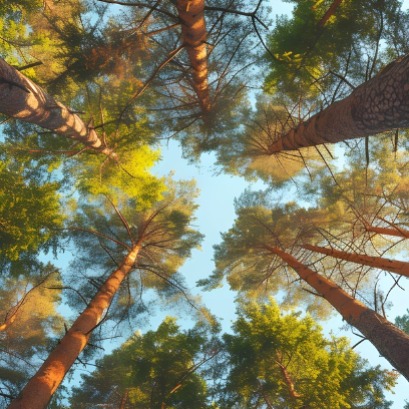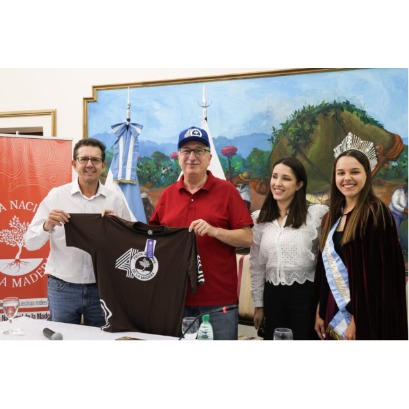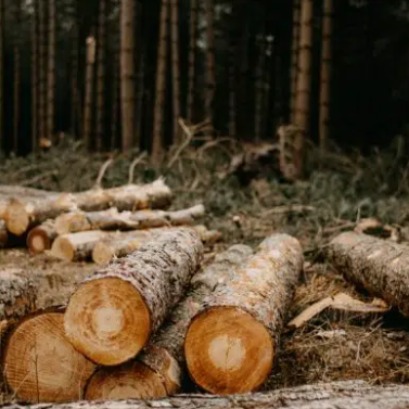
He is the most resistant wood producer in the world and grows in Argentina: he knows the tree that surprises with its properties
? In the north, one of the oldest and most resistant trees on the planet survives. ? Its name is Guayacán and has medicinal properties, in addition to an amazing wood.
? In the depth of Mount Chaqueño, where the earth is dry and the sun does not give a truce, a legendary tree grows silent and powerful: the guayacán. His robust appearance and slow growth made him one of the greatest botanical treasures in South America. And although many do not know, this tree has the most resistant wood in the world, valued both by its hardness and its beauty ? For centuries, the Guayacán was part of the landscape and the life of the communities of the North Argentina. Not only does it offer shadow and shelter to different species of the ecosystem, but it was also used for its healing and constructive properties, going from generation to generation as an invaluable natural resource. Today, this native tree arouses a renewed interest not only between scientists and carpenters, but also among those who seek to connect with ancestral knowledge and protect the natural resources of the country. known as Bulnesia Sarmientoi) is a species capable of resist the most extreme conditions of the soil and climate, which already makes it a rarity. But what really distinguishes it is its high density wood, so heavy that it sinks into the water, something unusual between the trees, according to an article from the Republic of Peru. At first glance, its wood presents tones that range from dark brown to green, with veins that give it a unique aesthetic. His growth is slow, which also contributes to its strength. Some specimens can live decades and even centuries, becoming living witnesses of local time and culture. Therefore, it is not surprising that it is a protected and valued tree in various regions of Latin America. Beyond the wood: medicinal uses of the guayacánade more of its use in luxury cabinetmaking and the manufacture of objects resistant to the passage of time, the Guayacán also stands out for its medicinal properties. In traditional medicine, its cooked cortex was used to treat rheumatisms, wounds and even diabetes. The flowers, on the other hand, are usually used in infusions to relieve cough, according to the aforementioned source. I even even gives rise to Guayacol, an extract that functions as an antiseptic, expectorant and stimulating, historically used in the treatment of respiratory diseases. Mexico, Colombia, Ecuador, Peru and Venezuela. In Argentina, it grows especially in the north and northwest provinces, especially in the semi -arid Chaco, where the native mountain still retains its natural wealth.
IT MAY INTEREST YOU
 Missions | The traditional National Wood Festival in November celebrates four decades of a popular gathering in San Vicente
Missions | The traditional National Wood Festival in November celebrates four decades of a popular gathering in San Vicente
The official announcement of the 4�th San Vicente National Wood Festival was made this Tuesday by the governor of Misiones, Hugo Passalacqua. The cultural and festive event will take place from November 5 to 9 at the Verón Gallardo Sports Center in San Vicente, Misiones, to celebrate four decades of history. The San Vicente National Wood Festival is a popular meeting point for the agroforestry and commercial community in the Alto Uruguay area, and is an opportunity for the forestry-industrial chain to expose its development and services. The festival includes cultural, artistic and economic promotion activities.
 Missions | They advance in the restoration with more than 5,��� native trees from areas of Foerster Provincial Park to strengthen a strategic biological corridor
Missions | They advance in the restoration with more than 5,��� native trees from areas of Foerster Provincial Park to strengthen a strategic biological corridor
More than 5,��� trees of native species were planted in sectors recently incorporated into the Horacio Foerster Park Guard Provincial Park, in the north of Misiones.
 Unprecedented Forest Crisis: with 8.1 million hectares destroyed, the goal of zero deforestation is in danger
Unprecedented Forest Crisis: with 8.1 million hectares destroyed, the goal of zero deforestation is in danger
A new report warns that the planet is experiencing an unprecedented forest crisis. In 2�24, forests suffered large-scale destruction with a permanent loss of almost 8.1 million hectares worldwide.





















